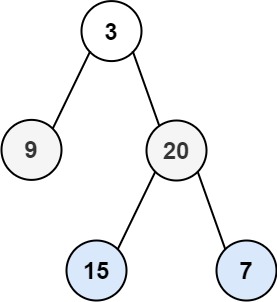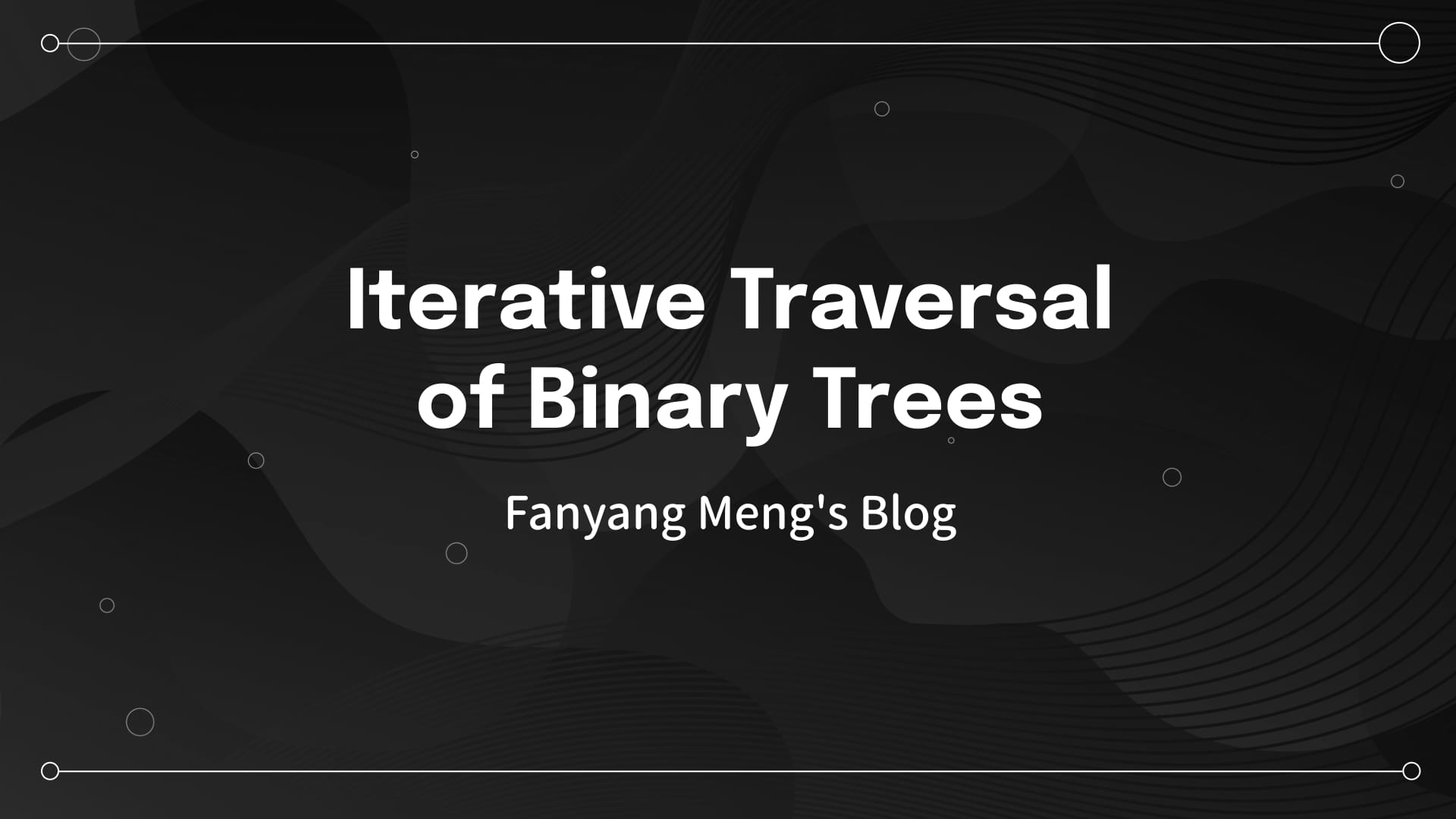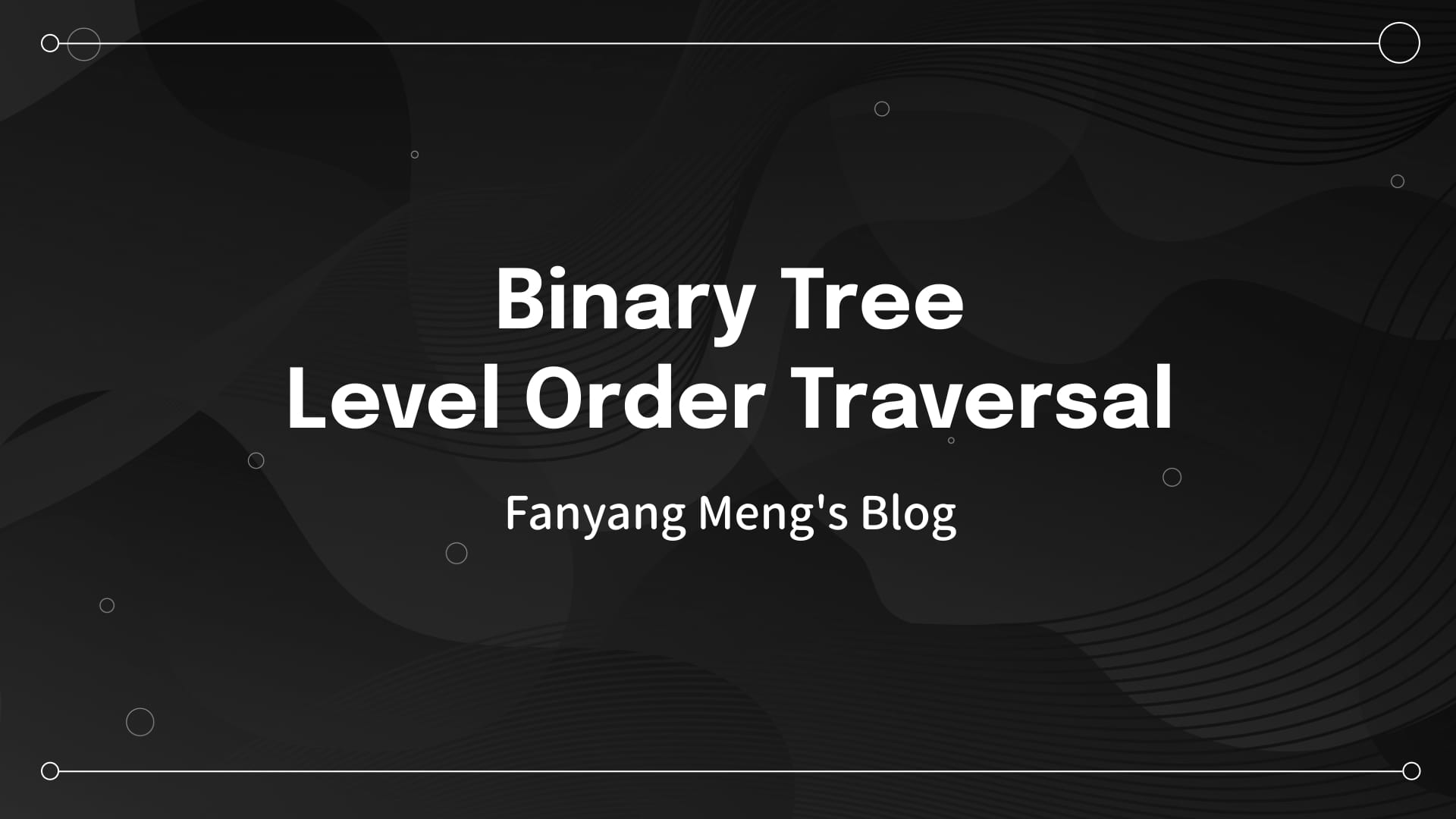Mastering level order traversal of binary trees will help you solve the following ten problems in one go:
- 102. Binary Tree Level Order Traversal
- 107. Binary Tree Level Order Traversal II
- 199. Binary Tree Right Side View
- 637. Average of Levels in Binary Tree
- 429. N-ary Tree Level Order Traversal
- 515. Find Largest Value in Each Tree Row
- 116. Populating Next Right Pointers in Each Node
- 117. Populating Next Right Pointers in Each Node II
- 104. Maximum Depth of Binary Tree
- 111. Minimum Depth of Binary Tree
Problem Statement
Given the root of a binary tree, return the level order traversal of its nodes' values. (i.e., from left to right, level by level).
Example 1:

Input: root = [3,9,20,null,null,15,7]
Output: [[3],[9,20],[15,7]]
Example 2:
Input: root = [1]
Output: [[1]]
Example 3:
Input: root = []
Output: []
Constraints:
- The number of nodes in the tree is in the range
[0, 2000]. -1000 <= Node.val <= 1000
Thought Process
Previously, we have covered three articles on depth-first traversal of binary trees:



Now, let's explore another traversal technique: level order traversal.
Understanding Level Order Traversal
Level order traversal processes nodes level by level, from left to right. Unlike depth-first traversal (preorder, inorder, postorder), level order traversal requires an auxiliary data structure: a queue.
Why use a queue?
- A queue follows the First In, First Out (FIFO) principle, which naturally aligns with the order in which nodes should be visited level by level.
- In contrast, a stack follows Last In, First Out (LIFO), which is better suited for recursive depth-first traversal.
Implementation
Using a queue, we can implement Breadth-First Search (BFS) on a binary tree.
This ensures that nodes are visited level by level from left to right.
Below is the Python implementation. This template can be used as a foundation to solve all ten problems listed earlier.
Iterative Approach Using a Queue
from collections import deque
from typing import List, Optional
# Definition for a binary tree node.
class TreeNode:
def __init__(self, val=0, left=None, right=None):
self.val = val
self.left = left
self.right = right
class Solution:
def levelOrder(self, root: Optional[TreeNode]) -> List[List[int]]:
if not root:
return []
queue = deque([root])
result = []
while queue:
level = []
for _ in range(len(queue)):
cur = queue.popleft()
level.append(cur.val)
if cur.left:
queue.append(cur.left)
if cur.right:
queue.append(cur.right)
result.append(level)
return resultRecursive Approach
from typing import List, Optional
# Definition for a binary tree node.
class TreeNode:
def __init__(self, val=0, left=None, right=None):
self.val = val
self.left = left
self.right = right
class Solution:
def levelOrder(self, root: Optional[TreeNode]) -> List[List[int]]:
if not root:
return []
levels = []
def traverse(node, level):
if not node:
return
if len(levels) == level:
levels.append([])
levels[level].append(node.val)
traverse(node.left, level + 1)
traverse(node.right, level + 1)
traverse(root, 0)
return levelsSummary
- Level order traversal processes nodes in a left-to-right, level-by-level manner.
- A queue (FIFO structure) is essential for implementing level order traversal iteratively.
- The recursive approach maintains a list of lists where each sublist represents a level in the tree.
- Understanding this traversal method sets the foundation for tackling various tree-based problems efficiently.




Discussion